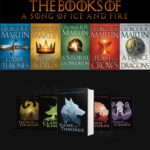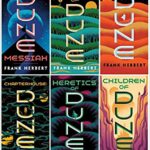Shakespeare in a Divided America: What His Plays Tell Us about Our Past and Future audiobook
Hi, are you looking for Shakespeare in a Divided America: What His Plays Tell Us about Our Past and Future audiobook? If yes, you are in the right place! ✅ scroll down to Audio player section bellow, you will find the audio of this book. Right below are top 5 reviews and comments from audiences for this book. Hope you love it!!!
Review #1
Shakespeare in a Divided America: What His Plays Tell Us about Our Past and Future audiobook free
James Shapiro (born in 1955) is a distinguished Shakespeare scholar at Columbia University in New York City. His books about William Shakespeare (1564-1616) include A Year in the Life of William Shakespeare: 1599 (2005), Contested Will: Who Wrote Shakespeare? (2010), and The Year of Lear: Shakespeare in 1606 (2015). Shapiros books about 1599 and 1606 are chock full of circumstantial detail about issues and conflicts in Renaissance England including details about the plague in England in 1606 (see the index of Shapiros book for plague).
One of the most influential byproducts of the English Renaissance in the English-speaking world is the King James Bible (1611). Shakespeares plays and poetry are also influential byproducts of the English Renaissance in the English-speaking world.
However, except for learned Shakespeare specialists, most Americans today do not readily understand everything in Shakespeares carefully packed lines. In live performances of a Shakespeare play, the sheer gusto of the spoken speeches enables audiences to feel like they are following the gist of what is said even if the precision of his carefully packed lines escapes them in the fast pace of the spoken speeches. For the creative precision of Shakespeares polysemous lines, most American readers would probably need to rely on the annotations provided by the editor(s).
Similarly, most Americans today would probably need to read the annotations in a study Bible edition of the King James Bible (1611) to better understand its early modern English which was a remarkable translation into vernacular English in its time, but its English is now dated and needs to be annotated.
In general, Renaissance humanists venerated three ancient languages: (1) Greek, (2) Latin, and (3) Hebrew. Consequently, King James (1566-1625) was able to assemble enough Hebrew experts to English the Hebrew Bible and enough Greek experts to English the New Testament. Latin was a lingua franca in the Renaissance, but Renaissance humanists preferred to emulate the ancient Latin poets and prose stylists rather than medieval exemplars.
The classic study of the Latin Middle Ages is E. R. Curtius book in German translated into English as European Literature and the Latin Middle Ages, translated by Willard R. Trask (1953; orig. German ed., 1948).
The classic study of Shakespeares limited formal education is T. W. Baldwins William Shaksperes Small Latine & Lesse Greeke, 2 volumes (1944).
In contrast with Shakespeare, the Cambridge University educated English Renaissance poet and pamphleteer John Milton (1608-1674) was fluent not only in Latin and Greek but also in Hebrew.
Now, Shapiro is also the editor of Shakespeare in America: An Anthology from the Revolution to Now (2014), which features a Foreword by former President Bill Clinton (born in 1946). Readers will note that Shapiro skips over the American colonies and begins his anthology with the American Revolution and the founding of the American Republic as a form of representative democracy.
Certain Founding Fathers were well educated. They were aware of the ancient experiment in limited participatory democracy in Athens and of the Roman Republic, in which Julius Caesar (100-44 BCE) was famously assassinated by Roman Senators leading ultimately to the emergence of the Roman Empire under Octavian (63 BCE 14 CE; also known as Caesar Augustus). Shakespeares play Julius Caesar is one of his most famous plays.
In my estimate, the celebration of Shakespeare in America reached a high point when Yales literary critic Harold Blooms book Shakespeare: The Invention of the Human (1998) became a bestseller. In it, Harold Bloom (1930-2019), who styles himself as a free-thinking Jew, advocates bardolatry as the new religion to supplant more widely known religions and their sacred scriptures with Shakespeare as the idol and his plays and poetry as bardolatrys sacred scripture. Evidently Bloom imagines himself as a founding figure of a new religion the equivalent to Moses and Jesus and Mohammed, eh?
In any event, Shapiros new 2020 book Shakespeare in a Divided America: What His Plays Tell Us about Our Past and Future includes an Introduction (pages ix-xxx), seven chapters (pages 1-198), each one focused on a single year (1833, 1845, 1849, 1865, 1916, and 1998) and a single topic (Miscegenation, Manifest Destiny, Class Warfare, Assassination, Immigration, Marriage, and, then, Adultery and Same-Sex Marriage, respectively), and a Conclusion (pages 202-221). The book includes a very informative Bibliographic Essay (pages 225-270) and an Index (pages 273-286).
In Shapiros Introduction, he discusses the controversial 2017 production of Shakespeares play Julius Caesar, orchestrated by Oskar Eustis (born in 1958), in New York City, and in the Conclusion, Shapiro continues his discussion of that controversial production. He served as a consultant on the production, helping the actors better understand their lines in Shakespeares play.
In Shapiros Introduction, he says, How Shakespeare won over America in the early nineteenth century is something of a mystery (page x). According to Shapiro, the strain of puritanism entrenched in the northern colonies was rabidly anti-theatrical (page x). But he also says, It helped that in a Bible-obsessed nation, Shakespeares language sounded so similar to that of the King James Version (1611) (page x).
Then Shapiro says, in summary, Yet much of the mystery of Why has America embraced Shakespeare? remains unsolved. All one can safely say is that Shakespeare took root in the United States [after the American Revolution] because he spoke to what Americans cared about. But his plays were not interpreted by everyone in the same ways (page xi) as he shows in circumstantial detail in his seven chapters.
I will offer my own solution as to why Americans embraced Shakespeare after the American Revolution below.
In Shapiros Introduction, he discusses the twenty-two-year-old Orson Welles 1937 production of Julius Caesar at Broadways Mercury Theatre (pages xviii-xx). Shapiro says, Reviewers at the time struggled, without much success, to reconcile the productions warnings about the dangers of fascism with its equal insistence on the limits and cluelessness of liberalism. Welles, who saw both sides, was drawn to the play precisely because Shakespeare has feelings for and against everyone in it (page xix).
Shapiro also says, As Welles told the New York Times, Its the same mob . . . that hangs negroes in the South, the same mob that maltreats Jews in Germany. For Welles, the heart of the play was the assassination scene, the funeral orations, and the death of [a poet and conspirator named] Cinna (page xx; Shapiros ellipsis).
In addition, Shapiro says, Welles [in 1937] was focused on fascist Europe, Eustis [in 2017] on Trumps America. Eustis too retained the scene in which Cinna is assaulted. . . . Eustis also included the proscription scene [in which an ascendant Antony and Octavian callously horse-trade over which of their political enemies in Rome they will kill off, to quote Shapiros characterization of the scene]; in his [Eustis] staging of it, Cinna the poet, assaulted and arrested earlier, is summarily executed along with Trebonius and others implicated in the assassination of Caesar or unluckily swept up in the crack down that followed (pages xx-xxi; my ellipsis).
Now, Eustis 2017 production of Julius Caesar was controversial, in part, because the actor playing Julius Caesar looked like President Donald Trump (born in 1946). Consequently, the famous assassination of Julius Caesar by the Roman Senators appeared to depict the assassination of a Trump-like political leader presumably in the name of saving the Republic. However, as we know, the assassination of Julius Caesar did not save the Roman Republic, and the imaginary assassination of President Trump might not save the American Republic.
However, in fairness to the historical Julius Caesar, I want to say here that he was an enormously more sophisticated and talented person than Trump is.
In Shapiros Introduction, he tells us that Trump had won less than a fifth of the vote in New York City (page xxi) where he was born and raised. But Shapiro does not tell us how many people in New York City saw Eustis controversial 2017 outdoor production of Julius Caesar in Central Park in New York City which is kind of reminiscent of the outdoor amphitheater in ancient Athens.
In Shapiros Introduction, he makes a certain point that will serve as the springboard from which I will jump to my promised solution to the mystery of why Americans embraced Shakespeare after the American Revolution:
Shakespeares habit of presenting both sides of an argument is especially characteristic of his Roman tragedies: Does Lucius mount a coup at the end of Titus Andronicus, backed by foreign soldiers, or is this simply a restoration of order? Are Antony and Cleopatra tragic figures or rather a strumpets fool and a Triple-turned whore? (1.1.13; 4.12.13). Does Coriolanus celebrate the defeat of authoritarianism or lament its loss? In habitually offering competing perspectives, and in assuming that his audiences were capable of appreciating this, Shakespeare was very much of his age, a product of an Elizabethan educational system that trained young minds to argue in utramque partem, on both sides of a question (page xxvi).
Regarding the Elizabethan educational system, Shapiro (page 227) refers to Joel B. Altmans 1978 book The Tudor Play of Mind: Rhetorical Inquiry and the Development of Elizabethan Drama.
Now, my favorite scholar is the American Jesuit Renaissance specialist and cultural historian Walter J. Ong (1912-2003; Ph.D. in English, Harvard University, 1955).
As far as I know, Ong does not explicitly discuss the Elizabethan educational system specifically anywhere in his 400 or so publications that would be relevant to Shapiros point about it.
However, Ong writes broadly about learning Latin as a second language in his 1959 article Latin Language Study as a Renaissance Puberty Rite that he reprinted in his 1971 book Rhetoric, Romance, and Technology: Studies in the Interaction of Expression and Culture (pages 113-141).
As to Shakespeare, Ong writes about Shakespeares use of commonplaces in his 1976 essay that he reprinted, slightly revised and re-titled, as Typographic Rhapsody: Ravisius Textor, Zwinger, and Shakespeare in his 1977 book Interfaces of the Word: Studies in the Evolution of Consciousness and Culture (pages 147-188). It is also reprinted in An Ong Reader: Challenges for Further Inquiry (2002, pages 429-463).
Ong had longstanding interest in commonplaces. For example, see his 1967 book The Presence of the Word: Some Prolegomena for Cultural and Religious History (see the index for specific page references), the expanded version of his 1964 Terry Lectures at Yale University.
However, in far broader terms, Ongs massively researched book Ramus, Method, and the Decay of Dialogue: From the Art of Discourse to the Art of Reason (1958) is relevant to what Shapiro says about Shakespeares tendency to present both sides of a question which is the central characteristic of what Ong refers to in his subtitle as the Art of Discourse.
By contrast, what Ong refers to in his subtitle as the Art of Reason is systemically monological in the sense of not including any systematic recognition of or refutation of any real or imagined adversarial positions. Ong sees the French Renaissance logician and educational reformer and Protestant martyr Peter Ramus (1515-1572) as laying the conceptual framework of the Art of Reason as practiced in the Age of Reason (also known as the Enlightenment) in Western culture, including the American Enlightenment as exemplified in the Declaration of Independence.
The classic study of Ramism and Ramist logic in American culture is Perry Millers massively researched book The New England Mind: The Seventeenth Century (1939). In it, he reports that he found only one self-described Aristotelian in seventeenth-century New England in a sea of self-described Ramists.
Perry Miller (1905-1963), an alcoholic in English at Harvard University, served as the director of Ongs massively researched doctoral dissertation at Harvard University, which was published in two volumes by Harvard University Press in 1958. Ive already mentioned Ongs primary volume. The second volume is titled Ramus and Talon Inventory. It is an annotated bibliography of over 750 volumes (most in Latin) by Ramus, his allies (such as Talon), and his critics that Ong tracked down in more than 100 libraries in the British Isles and Continental Europe.
When John Milton, mentioned above, studied at Cambridge University, Ramist logic dominated the curriculum just as it did at Harvard College (founded in 1636). But Shakespeare did not receive a university education, as noted above.
Later in Miltons life, he wrote (in Latin) a textbook in logic titled A Fuller Course in the Art of Logic Conformed to the Method of Peter Ramus (Artis Logicae Plenior Institutio, ad Petri Rami Methodum Concinnata), edited and translated by Walter J. Ong and Charles J. Ermatinger in volume eight of Yales Complete Prose Works of John Milton: 1666-1682, edited by Maurice Kelley (1982, pages 206-407). Ongs lengthy introduction (pages 139-205) is reprinted, slightly shortened, as Introduction to Miltons Logic in volume four of Ongs Faith and Contexts (1999, pages 111-141).
But does it make any difference that Ramist logic dominated the curriculum at seventeenth-century Harvard College? In the 2000 book Varieties of Transcendence: A Study in Constructive Postmodernism, the American Jesuit philosopher and theologian Donald L. Gelpi (1934-2011) repeatedly refers to what he terms the American Protestant dialectical imagination (pages 82, 132, 164, 172, 174, 192, 193, 206, 223, 224, 280(?), 281, and 282), which he distinguishes from the Roman Catholic analogical imagination.
Had Gelpi been familiar with Millers massively researched 1939 book about the seventeenth-century New England mind, mentioned above, or with Ongs massively researched 1958 book Ramus, Method, and the Decay of Dialogue: From the Art of Discourse to the Art of Reason, mentioned above, then Gelpi would have recognized that what he refers to as the American Protestant dialectical imagination is the Ramist dialectical imagination.
Now, you may be wondering what, if anything, Perry Millers 1939 book and Walter Ongs 1958 book and Donald Gelpis 2000 book have to do with James Shapiros new 2020 book about William Shakespeare.
In Shapiros Conclusion, he quotes Eustis as saying the following: Part of that divide [in American culture today] is between those of us who believe in this democracy and those of us who believe that this democracy has utterly failed. And those that believe that it has failed believe they are victims, they are oppressed by the intellectuals, by the liberals, by the elite, and that thats the source of their problem. And of course it isnt the actual source of their problem, but they are being fed constantly a lie in order to protect the interests of the ultra-rich. And it drives me crazy (quoted on page 220).
For all practical purposes, Eustis is here describing people who are trapped in their own dialectical logic — in the terminology that Gelpi uses, those people are, in effect, using the American Protestant dialectical imagination whether or not they happen to be American Protestants. In addition, they are also tragically succumbing to what Richard Hofstadter famously referred to as the paranoid style in American politics the style that tends to demonize real or imagined adversaries and adversarial positions.
However, historically, many Americans, including many American Protestants, put a wee bit of distance between themselves and the American Protestant dialectical imagination after the American Revolution when they embraced Shakespeare and, in effect, thereby embraced what Ong refers to in the subtitle of his 1958 book as the Art of Discourse, rather than the Art of Reason and the Decay of Dialogue that Ong refers to in the main title of his 1958 book.
Now, in the late Pauline Maiers 2010 book Ratification: The People Debate the Constitution, 1787-1788, she recounts the widespread popular debate in the court of public opinion about the proposed Constitution. In a real-world debate, even Ramists cannot avoid responding to adversaries and adversarial positions.
In Joseph J. Ellis 2018 book American Dialogue: The Founders and Us, he argues that the founders, in effect, practiced what Ong refers to in the subtitle of his 1958 book as the Art of Discourse and dialogue not the Art of Reason and the Decay of Dialogue that Ramus and his followers pioneered.
Review #2
Shakespeare in a Divided America: What His Plays Tell Us about Our Past and Future audiobook streamming online
James Shapiro, a professor at Columbia University in English and Comparative Literature, is an award winning author and acknowledged expert on William Shakespeare and his works. Shapiro’s latest book attempts to reflect 8 pivotal years/events in United States’ history against the “mirror” of Shakespeare’s plays. There are both some instances of interesting historical parallels and some cavernous leaps of, dare this reviewer say, “ideological fancy” that the reader is asked to ponder.
Without a doubt, America’s literate founding fathers were not only familiar with ancient Roman and English history, but also Shakespeare’s plays, especially the history plays depicting despotic, murderous rulers. Shapiro notes that English actors, male and female, sailed across the Atlantic to perform in traveling troupes throughout the colonies. The author writes that autodidacts, famous, anonymous and infamous, like Abraham Lincoln and John Wilkes Booth, were exposed to the works of the Bard found in both the McGuffey’s Reader, first printed in 1836 and William Scott’s Lessons in Elocution published in 1829. These reference works were widely read and distributed in the United States in the 19th century. Booth, whose father was an actor, memorized the plays for professional reasons. Lincoln read and memorized portions of them, for the beauty of the language, the historical enactments and the incites into the human psyche. Booth hated Lincoln’s politics, especially the emancipation of blacks, whom Booth considered an inferior race. He was a defender of the Confederacy. Booth did indeed act the role of Brutus in productions of Julius Caesar. That this would “hatch” within him the plot to assassinate Lincoln is absurd at best. Likewise, the detailed chapters about the fictitious film Shakespeare In Love and reworked Taming of the Shrew as Kiss Me Kate as reflections on changes in mores regarding women, hetero- and homosexuality and martial infidelity, require big stretches of imagination. America is not a melting pot, but more a tossed salad with distinct differences shaped by economic status, education, race, religion, gender and cultural background, with or without the backdrop of Shakespeare’s plays.
With the passage of the Common Curriculum, all high school students in the United States read and study at least one if not many of Shakespeare’s works. It is really unnecessary for the professor to assure us that, “The future of Shakespeare in America … would appear secure.” Shakespeare’s works will be read forever everywhere, not as reflections of past, current or future ideologies, but because these works capture the mind, the heart and the imagination of all who read them.
Review #3
Audiobook Shakespeare in a Divided America: What His Plays Tell Us about Our Past and Future by James Shapiro
While other reviewers seemed to have enjoyed this more than I, it did have some strong chapters. Most especially the chapter on 1865, with the views of Lincoln and Booth.
But I have to say, Kiss Me Kate is not Shakespeare, it is just based on Shakespeare’s Taming of the Shrew. And Shakespeare in Love is a movie about Shakespeare and a fictional muse.
The book is sketchy, the author makes broad brush observations across American history and then connects to a particular play.
Review #4
Audio Shakespeare in a Divided America: What His Plays Tell Us about Our Past and Future narrated by Fred Sanders
This is the first Shakespeare book I have read that approaches the plays not from the point of view about what the plays say but what we hear when we see/read the plays. And to frame our evolving interpretations in the arc of American history and experience is brilliant and fascinating and illuminating. I did something I never do. I read it twice. (Even better the second time.)
Review #5
Free audio Shakespeare in a Divided America: What His Plays Tell Us about Our Past and Future – in the audio player below
Comparable to Jon Meacham’s Songs of America, this is an engrossing read on how U.S. history can be seen through the lens of the various interpretations of Shakespeare’s plays. Eight issues and times in our history are seen through interpretations of the Bard. Who would have thought that John Quincy Adams was such a racist and misogynist. This book will appeal both to those who study U.S. History and to those who love Shakespeare.
Recommend Books
Galaxyaudiobook Member Benefit
- Free 2000+ ebooks (download and online)
- You can see your watched audiobooks
- You can have your favorite audiobooks
- After 15-Sep-2021, Bookmark will only available for Galaxyaudiobook member
Galaxy audio player
If the audio player does not work, please report to us, we will fix it as soon as possible (scroll up a little you will find the "REPORT CONTENT" button).













0 Comments: